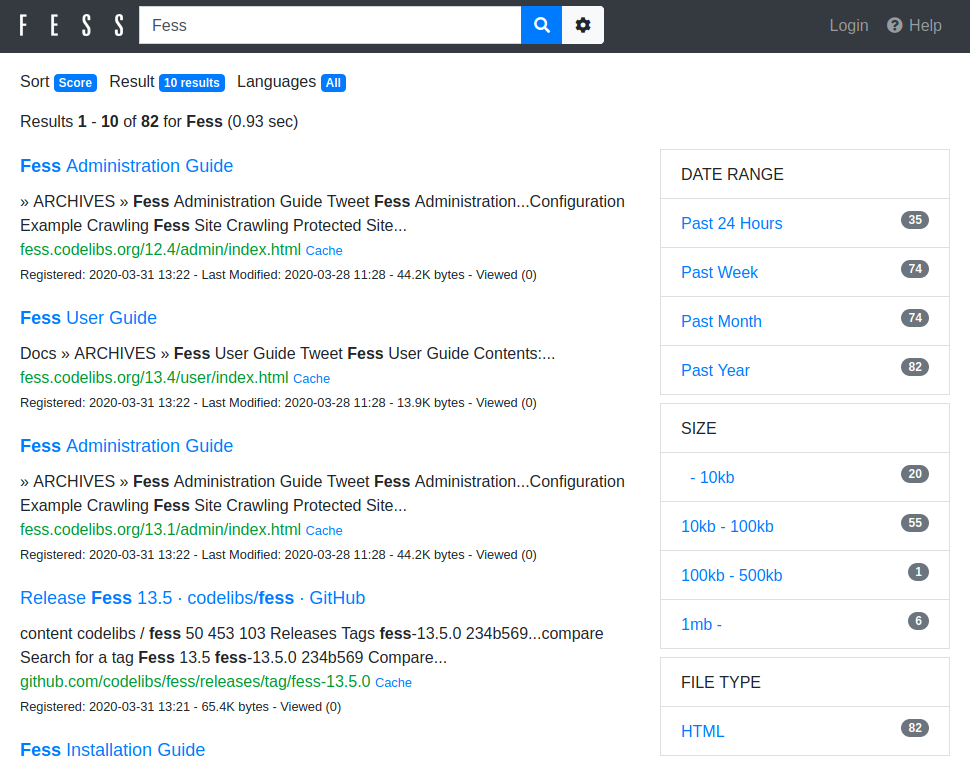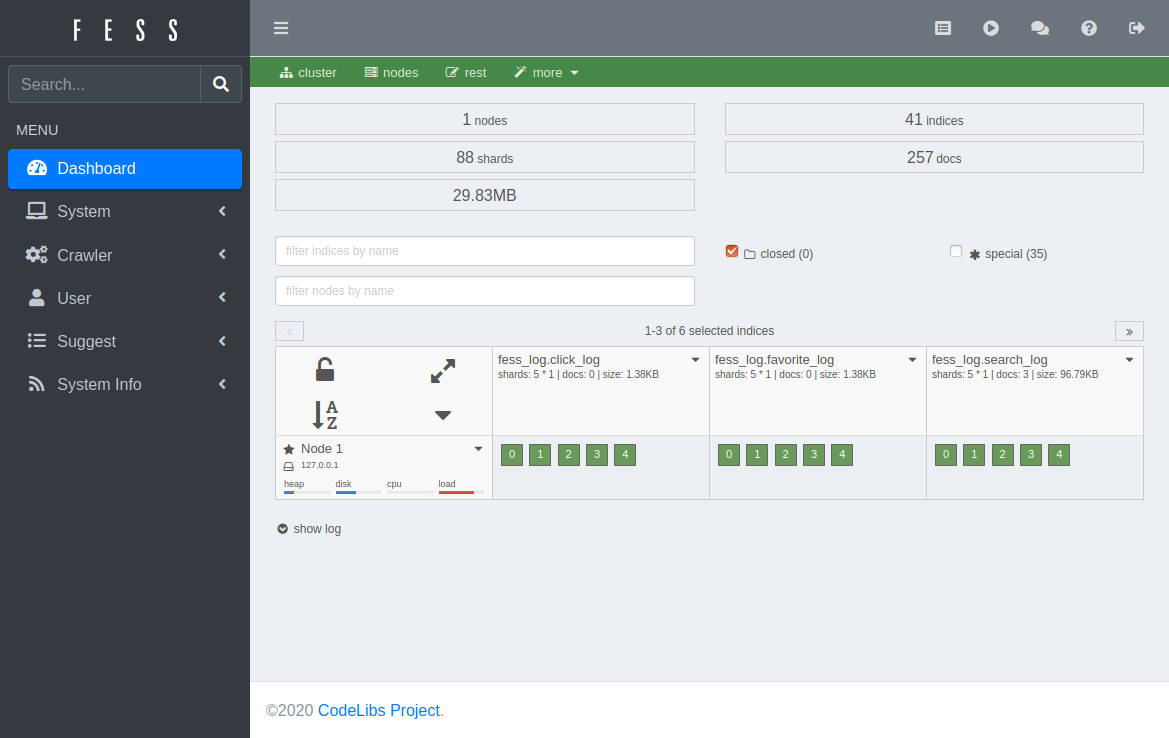- Sort Score
- Result 10 results
- Languages All
Results 1 - 10 of 51 for Passwort (1.3 sec)
-
src/main/resources/fess_label_de.properties
labels.suggestWord=Wort vorschlagen labels.targetLabel=Label labels.term=Begriff labels.fields=Felder labels.ex_q=Erweiterte Abfrage labels.oldPassword=Aktuelles Passwort labels.newPassword=Neues Passwort labels.confirmNewPassword=Neues Passwort (bestätigen) labels.menu_system=System labels.menu_wizard=Assistent labels.menu_crawl_config=Allgemein labels.menu_scheduler_config=Scheduler
Registered: Sat Dec 20 09:19:18 UTC 2025 - Last Modified: Sat Dec 13 02:21:17 UTC 2025 - 46.9K bytes - Viewed (1) -
docs/de/README.md
- Suchoberfläche: http://localhost:8080/  - Administrationsoberfläche: http://localhost:8080/admin/ (Standard-Benutzername/Passwort ist admin/admin) 
Registered: Sat Dec 20 09:19:18 UTC 2025 - Last Modified: Tue Nov 11 22:42:32 UTC 2025 - 7.8K bytes - Viewed (0) -
src/main/java/org/codelibs/fess/app/web/login/LoginAction.java
} return redirect(getClass()); } /** * Handles password change for the current user. * * @param form the password form containing new password and confirmation * @return the HTML response after password change attempt */ @Execute public HtmlResponse changePassword(final PasswordForm form) {Registered: Sat Dec 20 09:19:18 UTC 2025 - Last Modified: Thu Nov 27 07:01:25 UTC 2025 - 7.2K bytes - Viewed (0) -
fess-crawler/src/test/java/org/codelibs/fess/crawler/client/ftp/FtpClientTest.java
try { String username = "testuser"; String password = "testpass"; server = startFtpServer(FTP_PORT, username, password); Map<String, Object> params = new HashMap<String, Object>(); FtpAuthentication auth = new FtpAuthentication(); auth.setUsername(username); auth.setPassword(password);Registered: Sat Dec 20 11:21:39 UTC 2025 - Last Modified: Mon Nov 24 03:59:47 UTC 2025 - 21.5K bytes - Viewed (0) -
src/main/java/org/codelibs/fess/app/service/UserService.java
throw e; } } /** * Changes the password for a user identified by username. * Updates both the authentication manager and the database with the new encrypted password. * * @param username the username of the user * @param password the new password in plain text * @throws FessUserNotFoundException if the user is not found */Registered: Sat Dec 20 09:19:18 UTC 2025 - Last Modified: Mon Nov 24 02:07:40 UTC 2025 - 9.2K bytes - Viewed (0) -
src/main/java/org/codelibs/fess/opensearch/config/exentity/DataConfig.java
credentials = new NTCredentials(username, password == null ? StringUtil.EMPTY : password, workstation == null ? StringUtil.EMPTY : workstation, domain == null ? StringUtil.EMPTY : domain); } else { credentials = new UsernamePasswordCredentials(username, password == null ? StringUtil.EMPTY : password); } return credentials; }
Registered: Sat Dec 20 09:19:18 UTC 2025 - Last Modified: Mon Nov 24 02:07:40 UTC 2025 - 18.8K bytes - Viewed (0) -
src/main/resources/fess_label_en.properties
labels.suggestWord=Suggest Word labels.targetLabel=Label labels.term=Term labels.fields=Fields labels.ex_q=Extended Query labels.oldPassword=Current Password labels.newPassword=New Password labels.confirmNewPassword=New Password (Confirm) labels.menu_system=System labels.menu_wizard=Wizard labels.menu_crawl_config=General labels.menu_scheduler_config=Scheduler labels.menu_dashboard_config=Dashboard
Registered: Sat Dec 20 09:19:18 UTC 2025 - Last Modified: Sat Dec 13 02:21:17 UTC 2025 - 44K bytes - Viewed (0) -
src/main/java/org/codelibs/fess/auth/chain/CommandChain.java
} } @Override public boolean changePassword(final String username, final String password) { if (isTargetUser(username) && StringUtil.isNotBlank(password)) { return executeCommand(updateCommand, username, password) == 0; } return true; } @Override public User load(final User user) { return user; } /**Registered: Sat Dec 20 09:19:18 UTC 2025 - Last Modified: Fri Nov 28 16:29:12 UTC 2025 - 14.4K bytes - Viewed (0) -
src/main/java/org/codelibs/fess/app/web/admin/user/AdminUserAction.java
if (form.crudMode.intValue() == CrudMode.CREATE || StringUtil.isNotBlank(form.password)) { final String encodedPassword = ComponentUtil.getComponent(FessLoginAssist.class).encryptPassword(form.password); entity.setOriginalPassword(form.password); entity.setPassword(encodedPassword); }
Registered: Sat Dec 20 09:19:18 UTC 2025 - Last Modified: Thu Nov 20 13:56:35 UTC 2025 - 19.3K bytes - Viewed (0) -
fess-crawler/src/main/java/org/codelibs/fess/crawler/client/http/ntlm/JcifsEngine.java
return Base64.getEncoder().encodeToString(type1Message.toByteArray()); } /** * Generates a Type 3 NTLM message. * * @param username the username * @param password the password * @param domain the domain * @param workstation the workstation * @param challenge the Type 2 challenge message * @return the Base64-encoded Type 3 message
Registered: Sat Dec 20 11:21:39 UTC 2025 - Last Modified: Thu Dec 11 08:38:29 UTC 2025 - 4.3K bytes - Viewed (0)